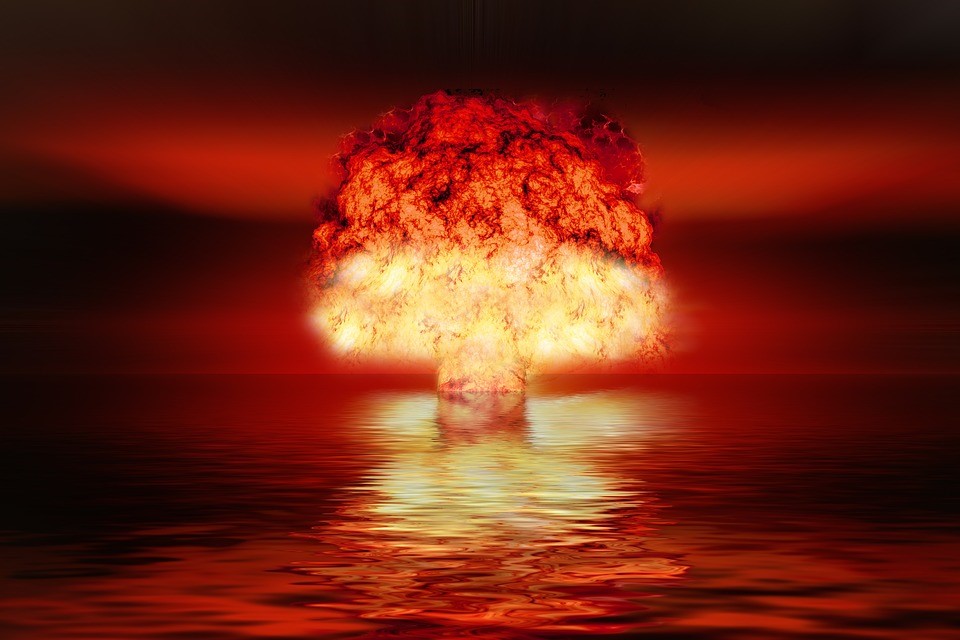A dramatic sequence of White House miscalculations has given Vladimir Putin the confidence that he can threaten nuclear warfare without fear of reprisal.
As this article was being prepared, American Military News reported that “Putin has sent nuclear-capable bombers to a critical Russian military installation where the country keeps part of its nuclear arsenal. The move is the latest sign that Putin may deploy nuclear weapons. The Israeli satellite intelligence firm ImageSat International was the first to detect an “irregular presence” of Russian Tu-160 and Tu-95 strategic bombers at Russia’s Olenya Air Base, the Jerusalem Post reported. The base is located in the northwest of Russia, near its border with Finland, and hosts a number of Russian nuclear weapons.”
To understand Moscow’s perspective, it must be remembered that, due to a treaty signed by President Obama, Russia has the world’s largest nuclear arsenal, as well as the most modernized. Indeed, because of its emphasis on building the planet’s most powerful atomic force, the weak Russian economy could hardly afford a massive conventional military, and relies on these weapons of mass destruction for the major portion of national defense. That is one reason why its army has fared so poorly in Ukraine.
In contrast, the U.S. nuclear arsenal has become reduced and antiquated. While Putin has modernized his atomic weapons and China is increasing its nukes, the U.S. has allowed its deterrent to shrink and become relatively obsolescent. Bizarrely, the Department of Defense (DOD) has even bragged about this, releasing a statement that “For decades, the United States has led the world in efforts to reduce the number of nuclear weapons…Thousands of short-range nuclear weapons not covered by any treaty were almost entirely eliminated from the U.S. nuclear arsenal…Overall, the U.S. nuclear weapons stockpile has drawn down by more than 85% from its Cold War high.” America has allowed this to happen even as our adversaries expand their nuclear weaponry. According to the DoD, “Russia and China have chosen a different path and have increased the role of nuclear weapons in their strategies and actively increased the size and sophistication of their nuclear forces.”
The possibility of atomic war is real. Navy Adm. Charles “Chas” A. Richard, commander of U.S. Strategic Command, noted in September that “[We are] back in the business of contemplating competition through crisis and possible direct armed conflict with a nuclear-capable peer. We have not had to do that in over 30 years. The implications of that are profound. They’re profound for homeland defense. They’re profound for strategic deterrence, as well as us achieving national objectives. And this is no longer theoretical…Russia and China can escalate to any level of violence that they choose in any domain with any instrument of power worldwide. We just haven’t faced competitors and opponents like that in a long time.”
It is not just bad nuclear weaponry decisions that have given dangerous signals to Putin. Two American presidential administrations, that of Barack Obama and Joe Biden, engaged in actions that convinced the Kremlin (and Beijing) that the cost of aggression was negligible and cost-free. When Russia annexed Ukraine’s Crimea, Obama did next to nothing. When China attacked the Philippine Exclusive Economic Zone, (and was eventually condemned for doing so by the World Court at the Hague) Obama didn’t even issue a diplomatic protest.
At the start of the current crisis, Biden weirdly stated that he would probably tolerate a “little” invasion of Ukraine. As the Kremlin’s forces gathered at the border of Ukraine, Biden utterly failed to provide the military material that would have convinced Moscow that it could well lose the upcoming war. This followed the stunningly incompetent withdrawal of U.S. forces from Afghanistan.
All of these blunders, conventional, nuclear, and diplomatic, have dangerously provided Putin with the confidence to rattle his atomic saber.
Illustration: Pixabay
